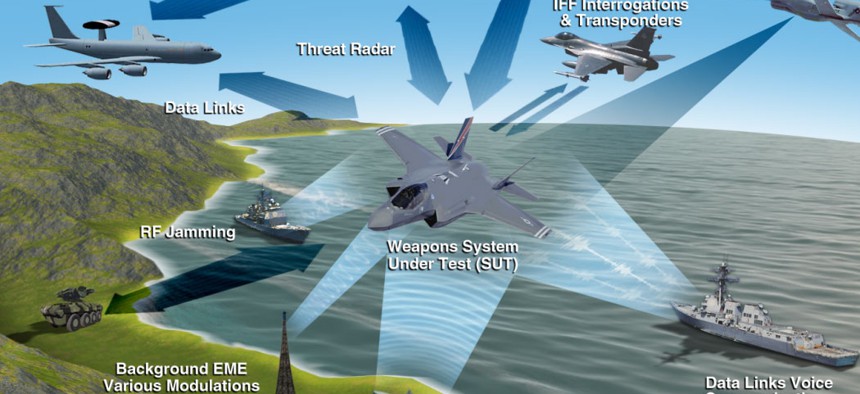
Navy continues electronic warfare upgrades for ships
A $149 million contract to Lockheed Martin is the latest step in a long-running program to improve the service’s ability to detect and defend against a variety of threats.
The Navy is moving forward with its incremental upgrades to shipboard electronic warfare systems with a $148.9 million contract award to Lockheed Martin for Surface Electronic Warfare Improvement Program (SEWIP) Block 2 subsystems.
The roughly three-year deal, part of the Navy’s ongoing improvements to the AN/SLQ-32 electronic warfare system, calls for full-rate production of the system to improve electronic warfare for early detection, analysis, threat warning, and protection from anti-ship missiles, according to the contract announcement from the Defense Department. SEWIP, started in 2002, is an evolutionary program to replace the 1970s-era AN/SLQ-32 systems, with each block adding new capabilities.
Block 1 of SEWIP added enhanced capabilities for anti-ship missile defense, counter targeting and counter surveillance. Block 2, for which Lockheed first received a maximum $147 million contract in September 2014, upgrades the antenna, receiver and open combat system interface. Block 3, being developed jointly by Lockheed and Raytheon, will add an electronic attack capability for all of the Navy’s ships. Eventually, Block 4 will provide electro-optical and infrared capabilities.
As the U.S. military shifts its focus toward the Pacific, the Navy has focused more on potential threats in the electromagnetic spectrum, looking to improve its EW attack capabilities and develop defensive tools, such as the Next Generation Jammer.
Work under the current contract is expected to be completed by November 2019.

